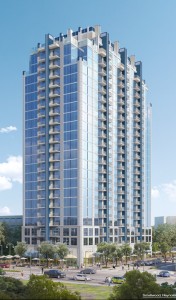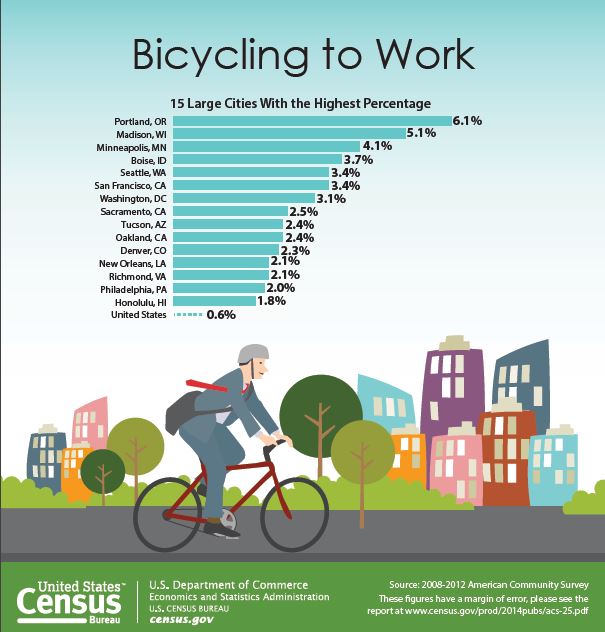By Yardi Blog Staff on August 5, 2014 in News
People have become increasingly preoccupied with well-being and seek healthier alternatives to everyday activities. Collaborative consumption, sustainable transportation choices, social connectivity and affordability have become guiding principles for a large par t of the American population.
t of the American population.
The benefits of adopting such principles are indeed great and may include lowering carbon footprint by sharing transportation – whether bike or car sharing, or turning to mass transit for daily commutes, saving costs and resources by choosing collaborative workspaces, cutting down expenses by borrowing and recycling things, and increasing social gratification by engaging in such programs as crowdfunding and product service systems (PPS).
This massive shift in consumer mindset has touched everything, from product preferences to lifestyle habits and housing choices. There is a growing demand for mixed-use communities and walkable environments in urban cores, particularly because working professionals and even empty nesters recognize de benefits of living more sustainably. Proximity to jobs, retail and entertainment options, access to public transportation and shared infrastructure systems, eco-friendly amenities and green spaces have become powerful incentives for attracting and retaining residents.
As sustainability has become a word that sells and transportation is a major concern for most renters, multifamily operators are providing alternative options for getting around while allowing residents to be good stewards of the environment. Bike sharing has now evolved into a well-developed, high-tech amenity that provides real value to tenants engaged in daily commutes.
Zagster, a company that provides turnkey bike sharing programs, is developing a national footprint of bike sharing programs in partnership with multi-family companies, businesses, hotel chains and universities, all of whom are looking to provide value added services and benefits to residents, guests or employees. More recently, the company teamed with Novare Group, a leading developer of cutting-edge, mixed-use high-rise communities in southeastern urban markets, to offer bike sharing to residents of SkyHouse South in Atlanta and SkyHouse Orlando (pictured, right). The cruiser-style bikes are available for residents by the hour or the day, giving them a practical, healthy and fun way to get around town.
“Residents choose our SkyHouse properties for our high standards of quality, luxury finishes, and unique amenities,” said Angela Ulrich, Vice President of Development for Novare Group, in a written statement. “With both the properties being located in the heart of the downtown area, Zagster will allow our residents to now have a new, fun, and healthy way to enjoy the many great aspects of their cities.”
The SkyHouse concept is an innovative high-rise multifamily program aimed at young professionals who want to live in urban infill areas close to business centers, night life, culture and public transportation.
Offering access to green transportation options becomes increasingly important in today’s marketplace, especially since non-motorized travel has gained tremendous popularity all over the country. According to a U.S. Census Bureau report, the number of people who traveled to work by bike increased roughly 60 percent over the last decade, from about 488,000 in 2000 to about 786,000 during the 2008-2012 period. This is the largest percentage increase of all commuting modes tracked by the 2000 Census and the 2008-2012 American Community Survey.
“In recent years, many communities have taken steps to support more transportation options, such as bicycling and walking,” said Brian McKenzie, a Census Bureau sociologist and the report’s author. “For example, many cities have invested in bike share programs, bike lanes and more pedestrian-friendly streets.”
While bicyclists still account for just 0.6 percent of all commuters, the report shows that some of the nation’s largest cities have more than doubled their rates since 2000. Portland, Oregon, had the highest bicycle-commuting rate at 6.1 percent, up from 1.8 percent in 2000. In Minneapolis, the rate increased from 1.9 percent to 4.1 percent.
The study also explores people’s stance with respect to walking to work and the conclusion is somewhat heartening. After steadily decreasing since 1980, the percent of people who walk to work has stabilized since 2000. In 1980, 5.6 percent of workers walked to work, and that rate declined to 2.9 percent by 2000. However, data shows that in the 2008-2012 period, the rate of walkers remained statistically unchanged from 2000. Among larger cities, Boston had the highest rate of walking to work at 15.1 percent.
The Census Bureau also released a new commuting edition of the interactive map Census Explorer, which gives Web visitors easy click-and-zoom access to commuting statistics for every neighborhood in the U.S. It also shows how commuting has changed since 1990 at the neighborhood, county and state level – including how long it takes to get to work, commutes longer than an hour, and number of bikers.
“Modes Less Traveled — Bicycling and Walking to Work in the United States: 2008-2012”, highlights the trends and socio-economic and geographic differences between motorized and nonmotorized commutes. This report — the Census Bureau’s first focusing only on biking and walking to work — is one of many that examines specific aspects of commuting, including workplace location, working from home, long commutes and specific travel modes.



